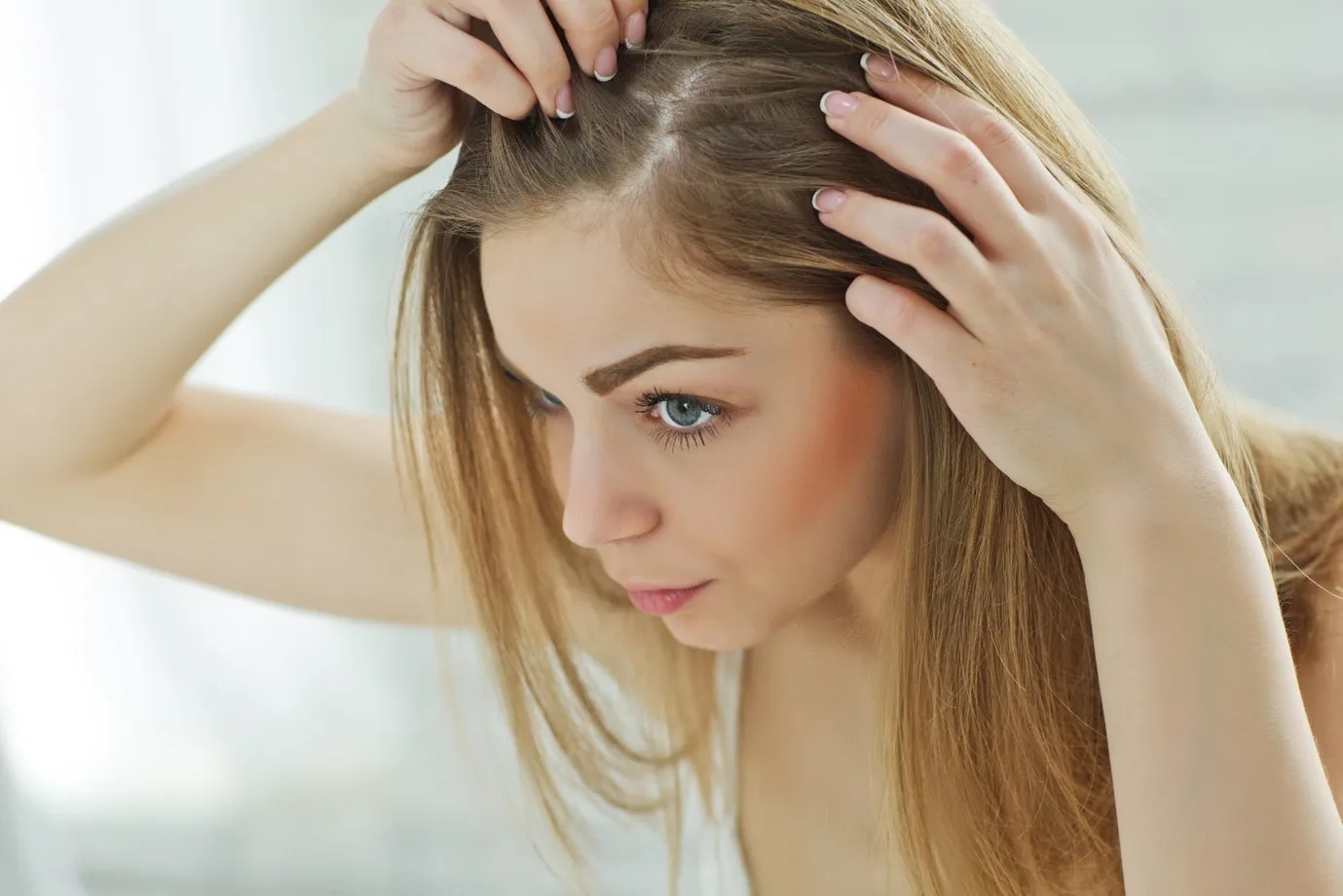WHAT IS THE DIFFERENCE BETWEEN OILY AND DRY DANDRUFF

One of the biggest fears for anyone who wants to wear black is finding those dreadful white flakes on the shoulder. You might dust it off, but the fear of its return lingers on. You wish it was dust falling from the heavens, but it’s most likely a case of dandruff .
And the path ahead isn’t as straightforward as you might like. It is imperative to determine whether you’re suffering from dry or oily dandruff, as the treatment for both can differ. There are nuances and distinctions that one must be aware of before you search for a dandruff remedy.
Causes and symptoms of oily dandruff
Causes and symptoms of dry dandruff
Oily Dandruff vs Dry Dandruff
While dealing with dry dandruff vs oily dandruff, an important point to note is that dry dandruff isn’t actually dandruff. The key differentiator is sebum, something your body produces through sebaceous glands to protect and moisturise the skin. In the absence of adequate sebum, you can develop an itchy, dry scalp that will begin to crack and shed flakes.
Oily dandruff, on the other hand, is different. An excessively oily scalp can result in the overgrowth of the fungus, Malassezia Globosa , which is already present on our skin. If allowed to go unchecked, this fungus can lead to the creation of oleic acid that you might be sensitive towards – almost half of the world is. This leads to a build-up of dead skin cells on your scalp, which starts to flake. Unlike dry scalp flakes, oily dandruff flakes are larger, oilier, and often a light shade of yellow. The difference between both kinds of dandruff is subtle but noticeable.
Causes and symptoms of oily dandruff
The first thing that happens is that your sebaceous glands start producing additional oil. And if you don’t clean this up, it can lead to oily dandruff. There are several factors that may trigger excess oil build-up:
- Weather fluctuations and seasonal changes can prompt additional oil production on the scalp.
- Overwashing your hair will strip away the natural oils, triggering an increase in oil production as an offset.
- Not washing your hair enough, or failing to take care of it, can turn your scalp into a hotbed for oily dandruff.
- Hormonal changes and reactions to medications could contribute to fluctuations in scalp oil levels.
And you can identify this oily dandruff by looking for the following:
- When it comes to oily hair vs dry hair, there is one clear identifier - oily dandruff, as the name suggests, is inevitably accompanied by oily hair and oily scalps.
- As the skin cells on your scalps begin to shed, you will notice large flakes that may be yellow or white in colour. These flakes are often sticky to the touch, due to which they get stuck in your hair and don’t fall to the shoulder with ease.
- Oily dandruff is not relegated just to your scalp. It can also be found on your eyebrows or on your face.
Causes and symptoms of dry dandruff
Dry dandruff is directly related to a lack of hydration and moisture on the scalp. Lifestyle and dietary choices, among other causes, can make you more susceptible to a dry scalp vs oily scalp.
- Prolonged or repeated exposure to cold, dry air can dry out your skin and contribute to the flaking of the scalp.
- Hair products that have harsh chemicals might interact with your skin and cause allergic reactions. This can trigger dry flaking and irritation on your scalp.
- Disruptions in your hormones, due to ageing or stress, can cause your scalp to dry out.
Similar to oily dandruff, dry dandruff also has certain tell-tale signs:
- The flakes are smaller and white in colour, as your dry scalp sheds dead skin.
- Dry dandruff is accompanied by dry skin. It could be on your scalp, your face or even other parts of your skin. This is an important differentiator between dry dandruff vs oily dandruff.
- These flakes generally have no trouble falling onto your shoulder and don’t get stuck to your hair.
Treatment
The irony of oily scalp vs dry scalp is that they share similar symptoms – itching and redness – but might require different treatments. It all depends on the severity of your condition and what your needs are.
Oiling your head might not seem like a solution for oily dandruff, but certain oils have anti-fungal properties that can curb the growth of the dandruff causing germs. Using oils like Tea Tree oil can help take care of both conditions, by regulating the amount of oil on your scalp. Even oils like coconut oil can be effective treatments for dry hair vs oily hair.
You can also create hair masks from aloe vera or lemon juice. These can moisturise your scalp and control the oil levels, directly impacting the severity of your problems. Create hair masks for your specific needs.
The best treatment for dealing with dry hair vs oily hair is to take care of your hair by creating a regimen of shampoo and conditioner. Products like the Head & Shoulders Neem can deep cleanse your scalp and protect against dandruff causing germs. You can also use products like the Head & Shoulders 2 in 1 Smooth and Silky , which can restore your dry hair strands while preventing the onslaught of dandruff.
Determining the needs of your scalp can be challenging. But by being informed of the causes and symptoms, you can take the adequate steps required to solve the issues. You should visit a dermatologist if your issues persist.



